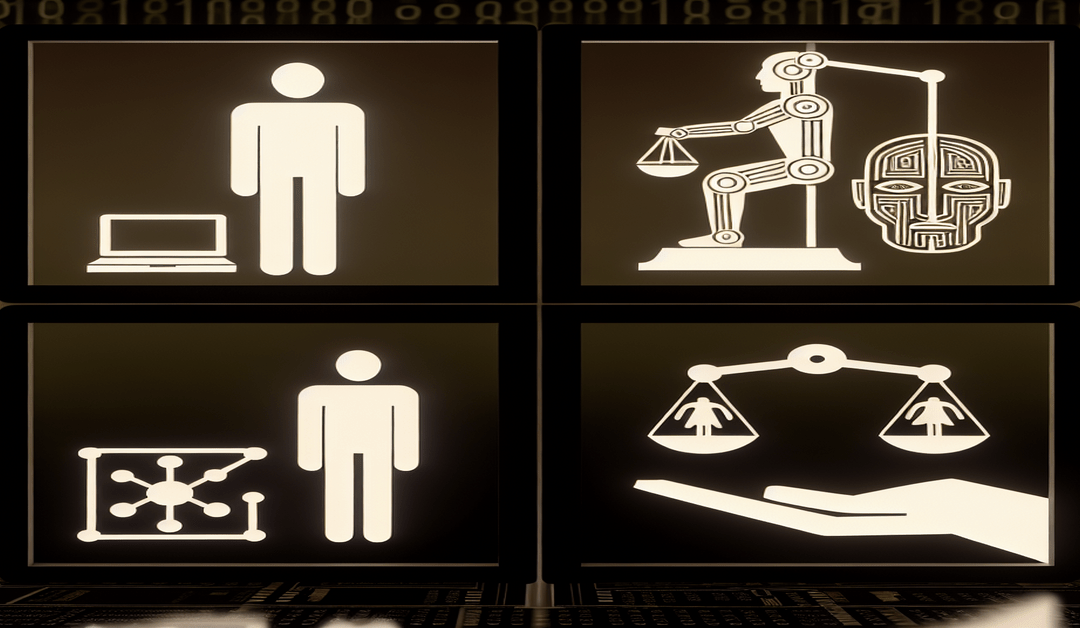The Dark Side of AI: How Human Misuse Amplifies the Risks
In recent years, artificial intelligence (AI) has made remarkable strides, revolutionizing industries and transforming the way we live and work. However, as AI becomes more sophisticated and ubiquitous, concerns about its potential risks have grown louder. While AI itself is not inherently dangerous, the way humans choose to use it could have severe consequences for society.
The Threat of Malicious Use
One of the most significant risks associated with AI is the potential for human misuse. As AI systems become more powerful and accessible, they could be harnessed for malicious purposes, such as cyber attacks, surveillance, and manipulation. Imagine a world where AI-powered bots flood social media platforms with fake news and propaganda, influencing public opinion and undermining democracy. Or consider the possibility of AI-driven cyber attacks that target critical infrastructure, causing widespread disruption and chaos.
Ethical Considerations in AI Development
To mitigate these risks, it is crucial that developers and policymakers prioritize ethical considerations in the development and deployment of AI. This means ensuring that AI systems are designed with safeguards against misuse and that they are trained on diverse and unbiased data sets. It also means establishing clear guidelines and regulations for the use of AI, particularly in sensitive domains such as law enforcement and healthcare.
The Dangers of Biased AI
Another major concern is the potential for AI systems to perpetuate and amplify existing biases. If an AI system is trained on biased data, it can lead to discriminatory outcomes in areas like hiring, lending, and criminal justice. For example, an AI-powered hiring tool that is trained on historical data may learn to favor male candidates over female candidates, even if gender is not explicitly programmed into the system.
Ensuring Fairness and Transparency in AI
To address this issue, it is essential that AI systems are designed with fairness and transparency in mind. This means regularly auditing AI systems for bias and discrimination, and being transparent about how decisions are made. It also means involving diverse stakeholders in the development process, including those who may be adversely affected by the technology.
The Specter of Autonomous Weapons
Perhaps the most chilling scenario is the development of autonomous weapons systems that can make life-or-death decisions without human intervention. While fully autonomous weapons are not yet a reality, the technology is rapidly advancing, and many experts warn that they could lead to a new arms race and increase the risk of conflict escalation.
The Need for International Cooperation
To prevent this dystopian future, it is crucial that the international community comes together to establish common standards and guidelines for the development and use of autonomous weapons. This includes agreeing on definitions of what constitutes an autonomous weapon, as well as setting limits on their use and establishing mechanisms for transparency and accountability.
The Role of Regulation and Oversight
More broadly, there is a growing recognition of the need for robust regulations and oversight mechanisms to ensure that AI is developed and used responsibly. This includes establishing clear standards for the ethical development and deployment of AI, as well as creating mechanisms for monitoring and enforcement.
Fostering Public Awareness and Dialogue
Ultimately, addressing the risks of AI misuse will require a sustained effort from all stakeholders, including developers, policymakers, and the general public. By fostering greater public awareness and dialogue about the potential risks and benefits of AI, we can work towards a future where the technology is harnessed for the greater good, while minimizing the potential for harm.
As we navigate this complex and rapidly evolving landscape, it is essential that we remain vigilant and proactive in addressing the challenges posed by AI. By prioritizing ethical considerations, ensuring fairness and transparency, and establishing robust regulations and oversight mechanisms, we can work towards a future where AI is a force for positive change, rather than a tool for oppression and harm.
#ArtificialIntelligence #AIEthics #ResponsibleAI
-> Original article and inspiration provided by Arvind Narayanan
-> Connect with one of our AI Strategists today at Opahl Technologies

